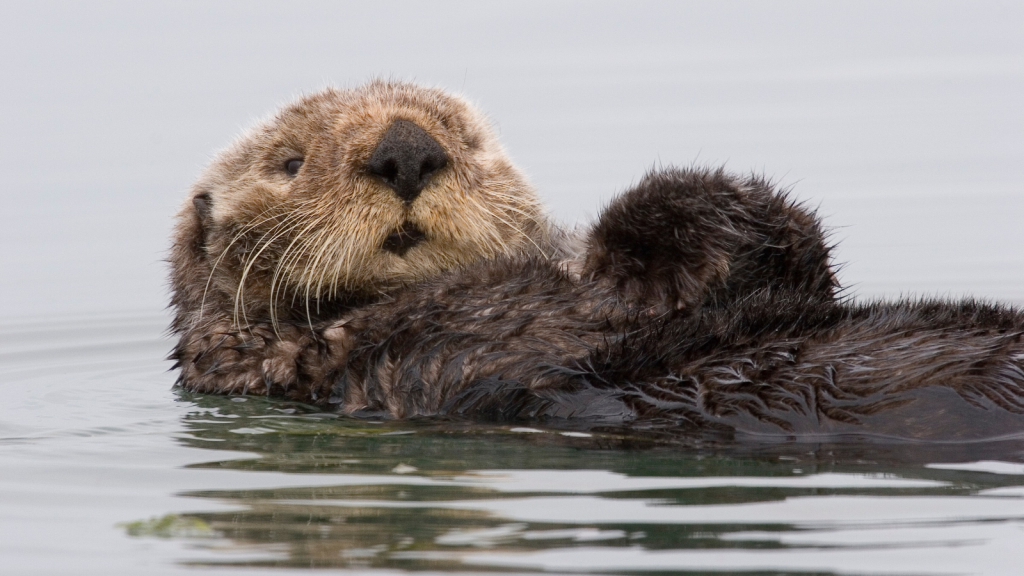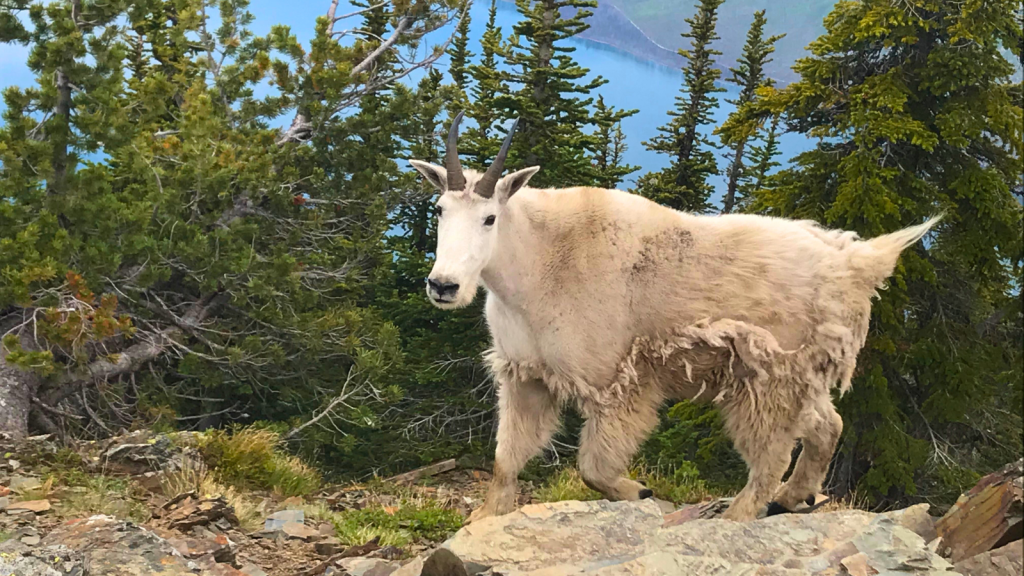The Pacific Northwest is a land of misty forests, rugged coastlines, and snow-capped mountains. This unique corner of North America, stretching from northern California to southern Alaska, is home to an incredible array of wildlife. The region’s varied habitats support everything from tiny sea creatures to massive land mammals. Many of these animals have become symbols of the area’s wild beauty and untamed spirit. They’ve adapted to thrive in the Pacific Northwest’s challenging environments, from the depths of the Pacific Ocean to the heights of the Cascade Range. Here are 15 iconic animals that call the Pacific Northwest home.
1. Orca

Orcas, also known as killer whales, are the largest members of the dolphin family. These intelligent marine mammals are easily recognised by their distinctive black and white colouring. Orcas in the Pacific Northwest are famous for their unique hunting techniques, including intentionally beaching themselves to catch seals. They live in close-knit family groups called pods, with each pod having its own dialect of calls.
2. Bald Eagle

The bald eagle is a powerful symbol of the Pacific Northwest’s wild spirit. These majestic birds of prey have a wingspan of up to 2.3 metres and are known for their white head and tail contrasting with a dark brown body. Bald eagles are excellent fishers, often seen swooping down to snatch salmon from rivers and coastal waters. They build massive nests in tall trees, returning to the same nest year after year.
3. Pacific Salmon

Pacific salmon are the lifeblood of the Northwest’s ecosystems. These remarkable fish are born in freshwater streams, migrate to the ocean where they spend most of their lives, then return to their birthplace to spawn. There are five species of Pacific salmon: Chinook, Coho, Sockeye, Pink, and Chum. Their annual runs are crucial for many other species, including bears, eagles, and orcas.
4. Grey Wolf

The grey wolf has made a comeback in parts of the Pacific Northwest after being nearly eradicated. These intelligent canines live and hunt in packs, working together to bring down large prey like elk and deer. Wolves are known for their haunting howls, which they use to communicate over long distances. Their return has had far-reaching effects on the ecosystem, influencing everything from deer populations to river health.
5. Sea Otter

Sea otters are charming marine mammals known for floating on their backs while using rocks to crack open shellfish. These playful creatures have the densest fur of any animal, with up to a million hairs per square inch. Sea otters play a crucial role in maintaining kelp forests by eating sea urchins, which would otherwise overgraze the kelp. Their recovery from near-extinction is a major conservation success story in the Pacific Northwest.
6. Roosevelt Elk

Named after President Theodore Roosevelt, these are the largest elk in North America. Roosevelt elk are well-adapted to the wet, forested environments of the Pacific Northwest. Males grow massive antlers each year, which they use in spectacular jousting matches during the autumn mating season. These majestic animals can often be seen grazing in meadows or old-growth forests.
7. Pacific Giant Octopus

The Pacific giant octopus is the largest octopus species in the world, with some individuals reaching arm spans of up to 6 metres. These incredible creatures are known for their intelligence and problem-solving abilities. Giant octopuses can change colour and texture to blend in with their surroundings, making them masters of camouflage. They’re found in the cold, deep waters off the Pacific Northwest coast.
8. Black Bear

Black bears are common throughout the forested regions of the Pacific Northwest. Despite their name, they can be various colours, including brown, cinnamon, and even white (in the case of the rare Kermode or “spirit” bear). These bears are excellent climbers and swimmers. They have a varied diet, eating everything from berries and nuts to fish and small mammals.
9. Steller Sea Lion

Steller sea lions are the largest of the eared seals, with males weighing up to a tonne. These massive pinnipeds gather in large colonies on rocky coastlines and islands. Male Steller sea lions have a distinctive mane of coarse hair, giving them a lion-like appearance. They’re excellent swimmers, diving to depths of over 400 metres to hunt fish and squid.
10. Pileated Woodpecker

The pileated woodpecker is the largest woodpecker in North America, about the size of a crow. These striking birds are easily recognised by their bright red crest and loud, resonating calls. Pileated woodpeckers play a crucial role in forest ecosystems by creating large holes in trees, which provide homes for many other species. They’re often heard before they’re seen, thanks to their loud drumming on trees.
11. Mountain Goat

Mountain goats are the sure-footed acrobats of the Pacific Northwest’s high peaks. These nimble animals can navigate nearly vertical cliff faces with ease, thanks to their specialised hooves. Mountain goats have a thick white coat that keeps them warm in their chilly alpine habitats. They’re known for their sharp, curved horns, which both males and females possess.
12. Rufous Hummingbird

The rufous hummingbird is a tiny powerhouse, known for its aggressive nature and impressive migration. These small birds travel up to 6,400 kilometres each year between their winter homes in Mexico and their breeding grounds in the Pacific Northwest. Male rufous hummingbirds have bright orange-red throats that flash brilliantly in the sunlight. They’re important pollinators for many wildflowers in the region.
13. Pacific Harbour Seal

Pacific harbour seals are common sights along the Northwest coast, often seen basking on rocks or bobbing in the water. These seals have spotted coats that vary in colour from silvery-grey to dark brown or black. Unlike their larger cousins, the sea lions, harbour seals have no external ear flaps. They’re excellent swimmers and can dive for up to 30 minutes in search of fish, squid, and octopuses.
14. Marbled Murrelet

The marbled murrelet is a unique seabird that nests in old-growth forests. These small, chunky birds spend most of their time at sea, coming to land only to nest. Marbled murrelets lay their single egg on the broad branches of ancient trees, sometimes up to 80 kilometres inland. Their dependence on old-growth forests has made them an important indicator species for forest health in the Pacific Northwest.
15. Banana Slug

The banana slug might seem an odd choice for an iconic animal, but these giant forest-dwelling molluscs are beloved symbols of the Pacific Northwest. They can grow up to 25 centimetres long, making them one of the largest terrestrial slug species in the world. Banana slugs play a crucial role in forest ecosystems by eating dead plant material and spreading seeds and spores. Their bright yellow colour and gentle nature have made them unlikely mascots for the region.
15 Facts About the Honey Badger, the Fiercest Animal in Africa

The honey badger, a small but mighty creature, roams the African wilderness with a fearless attitude that’s earned it quite a reputation. These tenacious animals have captured the imagination of wildlife enthusiasts and casual observers alike. Despite their name, honey badgers aren’t closely related to European badgers and are more akin to weasels and otters. Their tough-as-nails approach to life and remarkable abilities have made them the stuff of legend. Let’s explore some fascinating facts about these extraordinary creatures that prove why they’re considered Africa’s fiercest animals.
Read More: 15 Facts About the Honey Badger, the Fiercest Animal in Africa
Modern Sea Monsters | 15 Massive Marine Mammals Still Roaming Our Oceans

The oceans of our planet are home to some of the most awe-inspiring creatures on Earth. These marine mammals, with their enormous size and incredible adaptations, seem alien or prehistoric. But an actual up-close interaction with one of these incredible creatures is life-changing. Their lives and sheer size might be unfathomable, but their intelligence and magnificence is clear for all to see. From the largest animal to ever exist to deep-diving behemoths with teeth as big as your arm, these creatures are awe-inspiring and remind us why we need to do more to save our oceans before it’s too late.
Read More: Modern Sea Monsters | 15 Massive Marine Mammals Still Roaming Our Oceans
Meet the Wolf Spider | One of Britain’s Biggest Spiders

Wolf spiders are a remarkable group of arachnids found across the UK and around the world. These agile hunters get their name from their wolf-like hunting style, actively chasing down prey rather than spinning webs. With their large eyes and hairy bodies, wolf spiders might look intimidating, but they’re actually quite beneficial to gardens and homes. These spiders help control pest populations and are generally harmless to humans. From their unique parenting techniques to their impressive hunting skills, wolf spiders are full of surprises.
Read More: Meet the Wolf Spider | One of Britain’s Biggest Spiders



